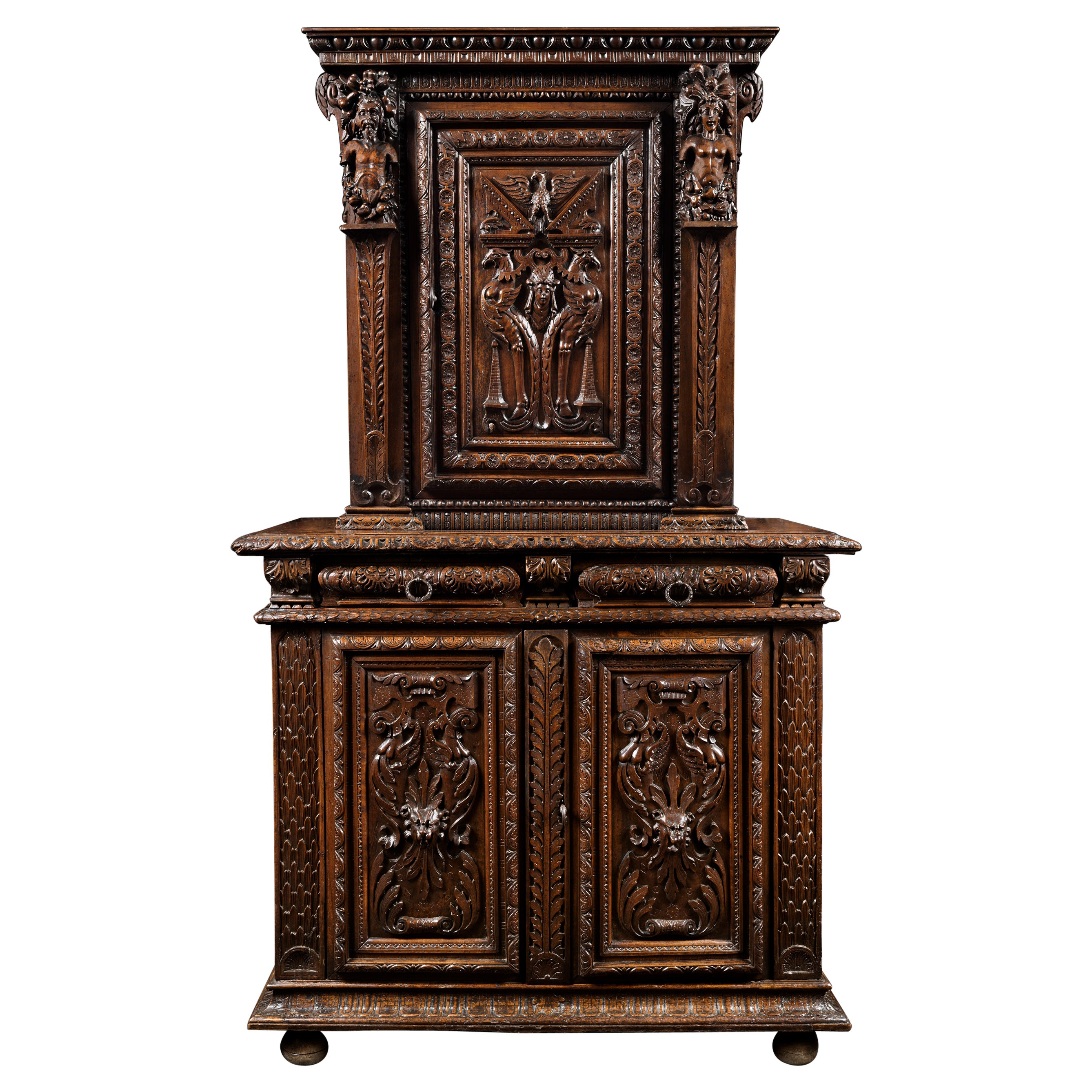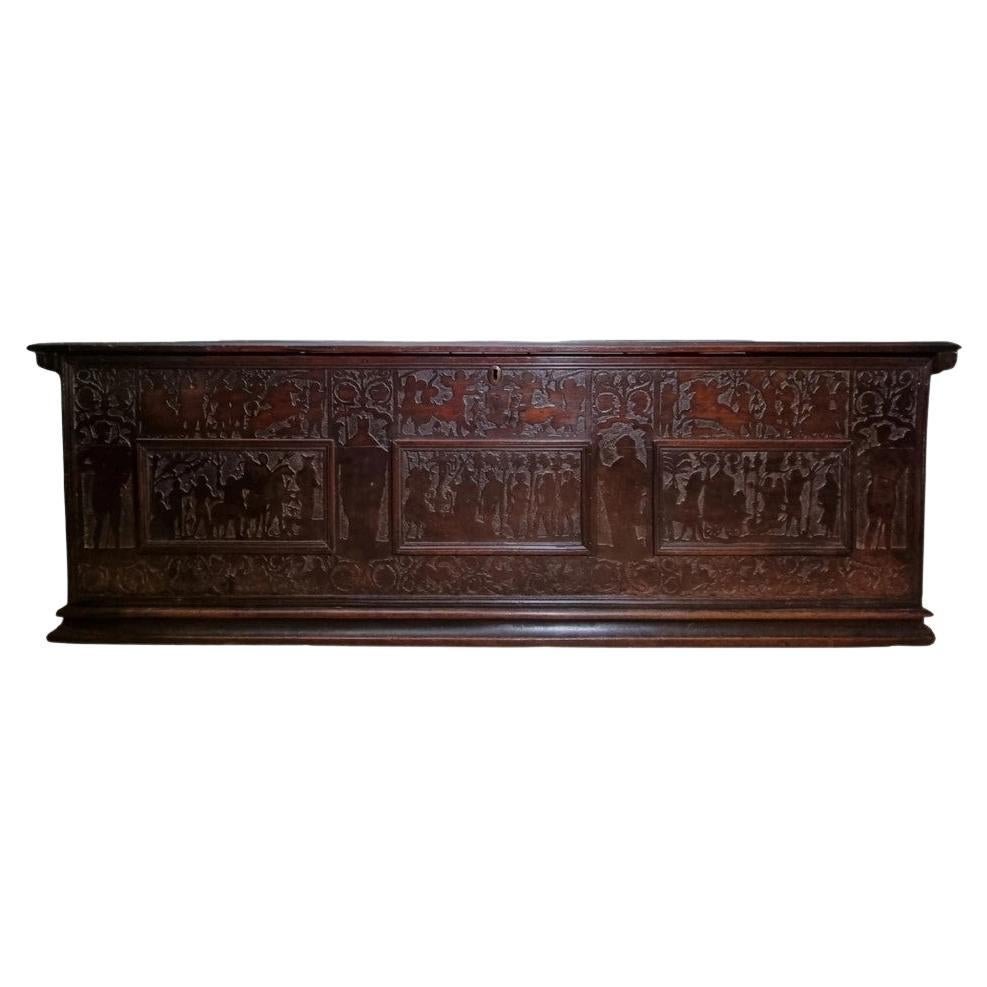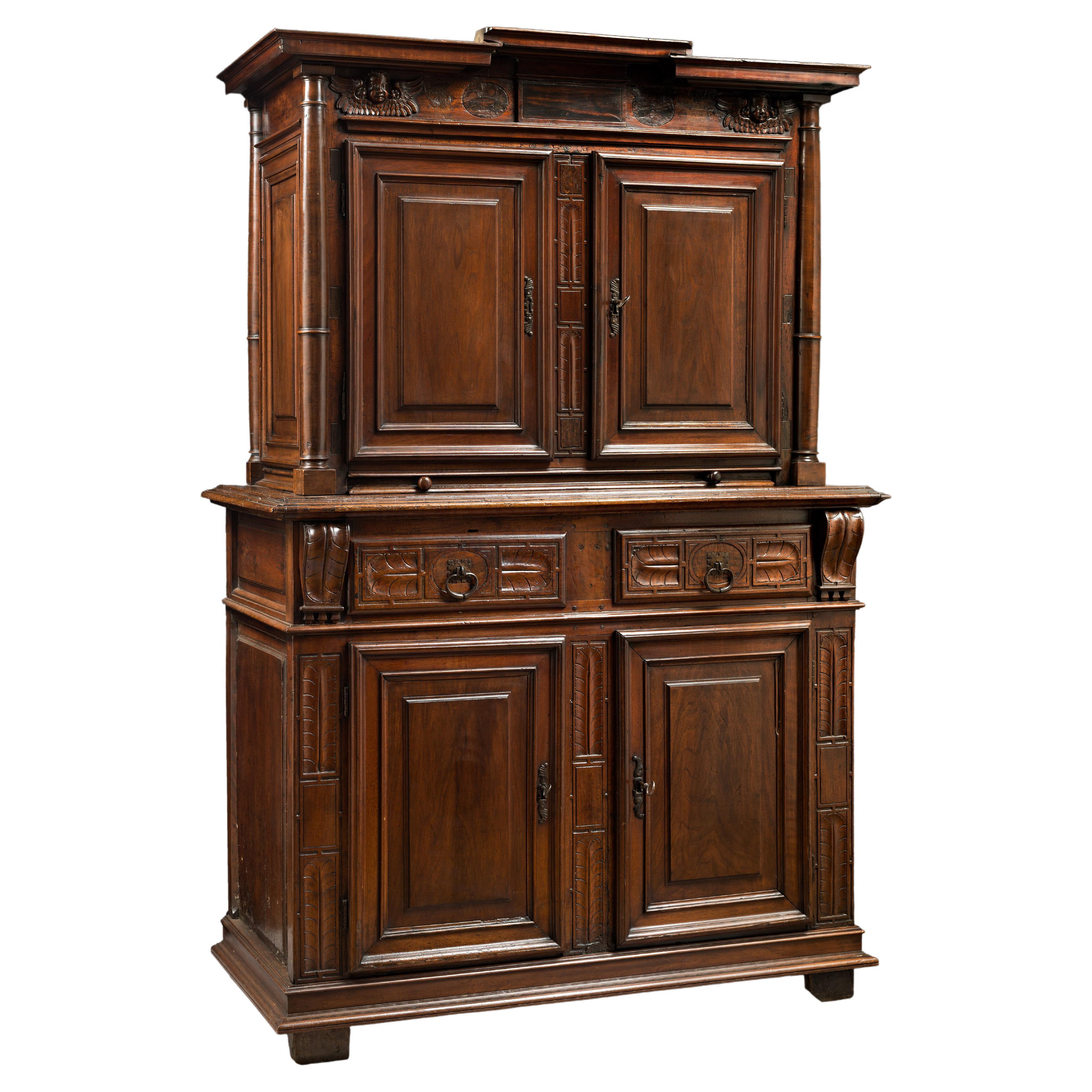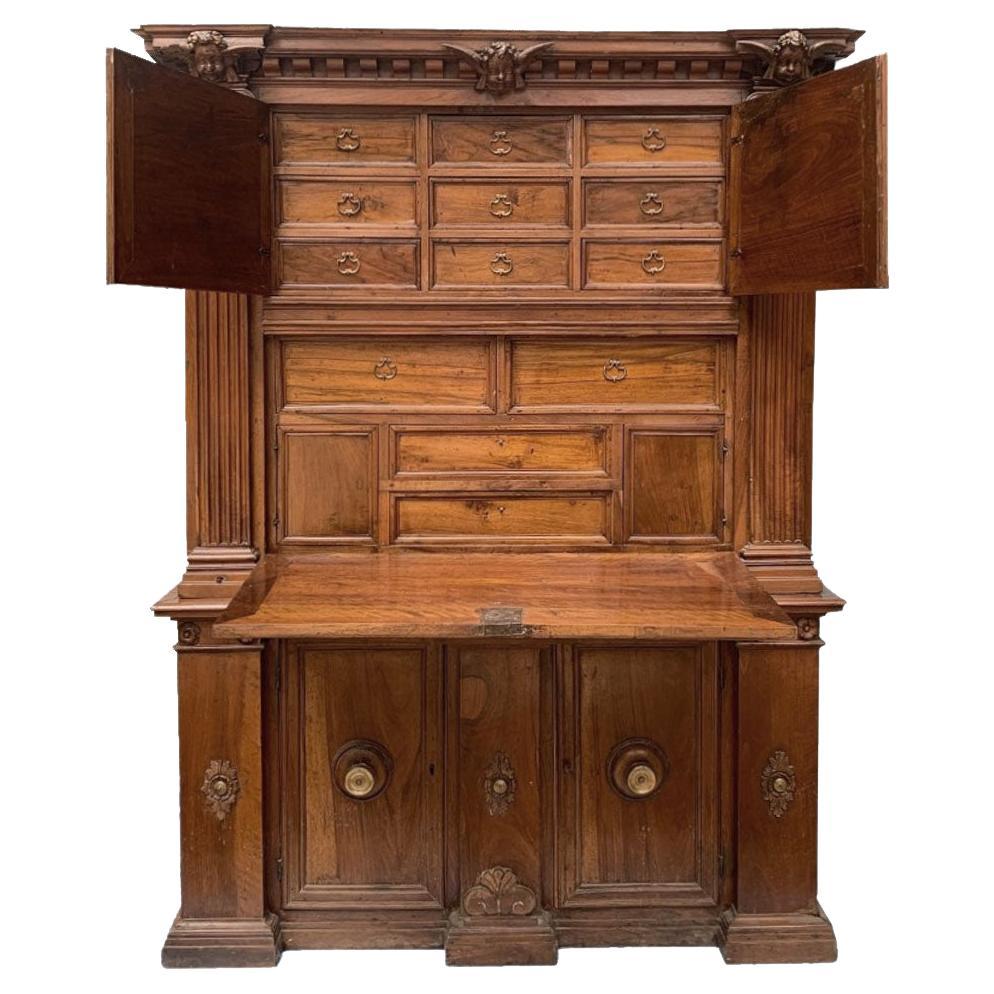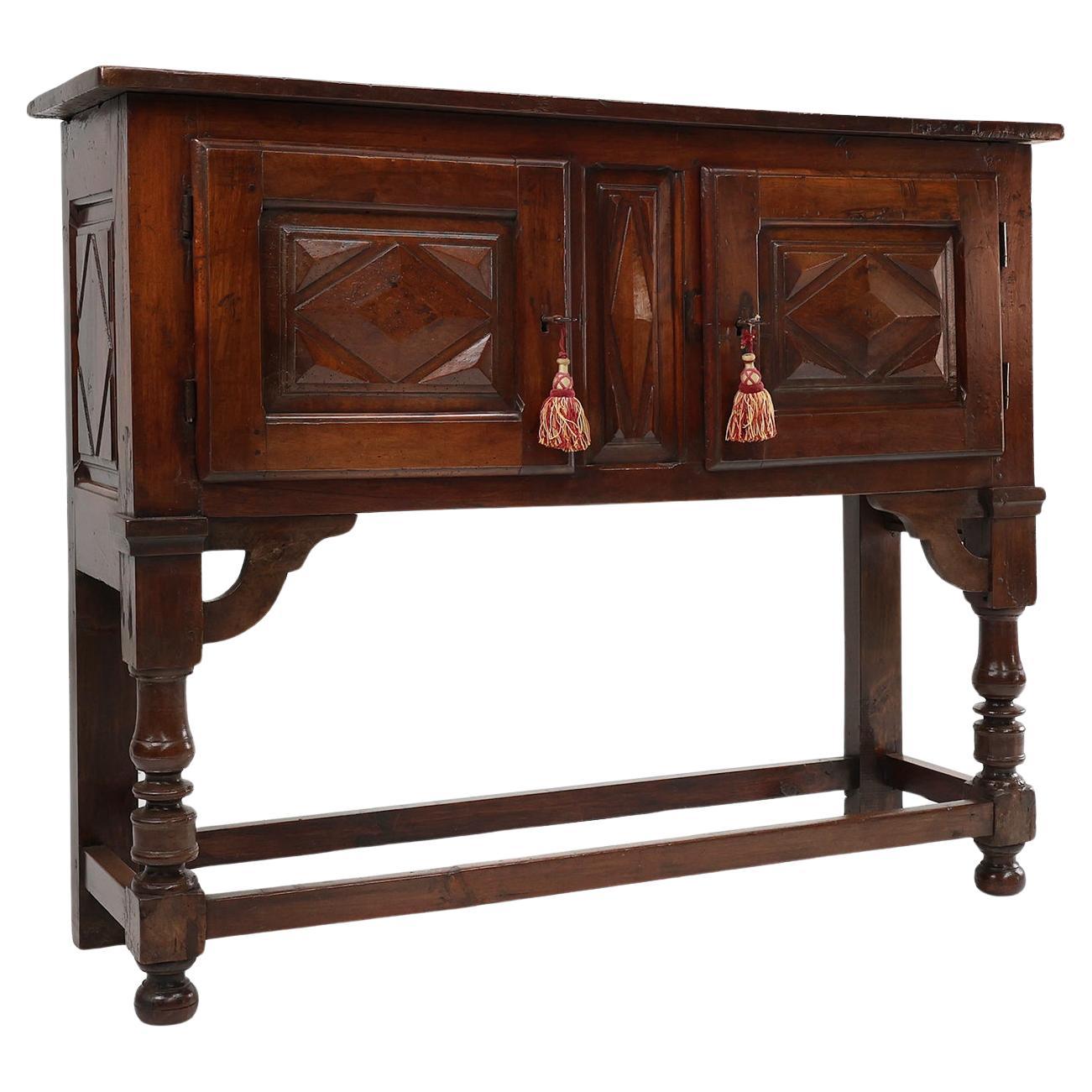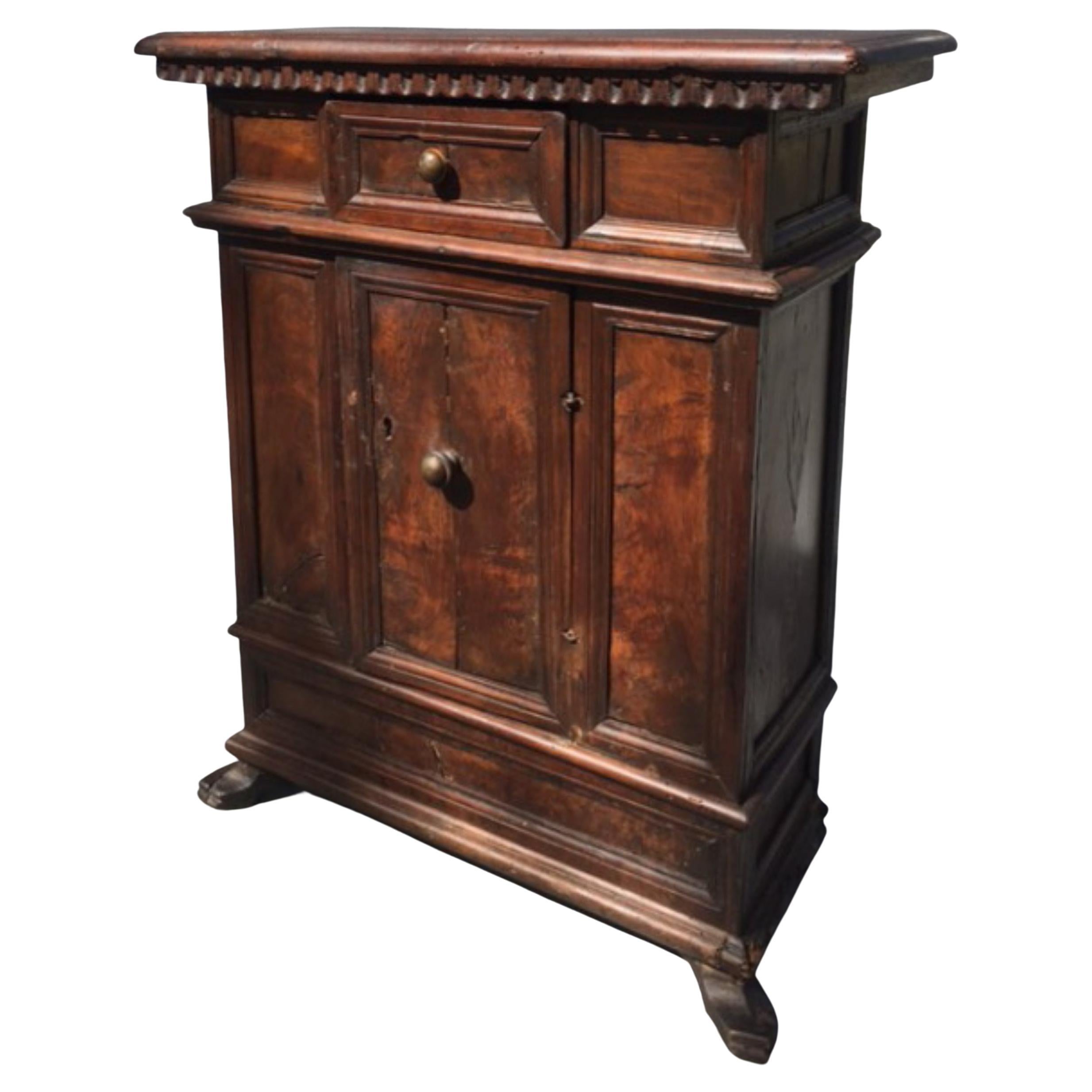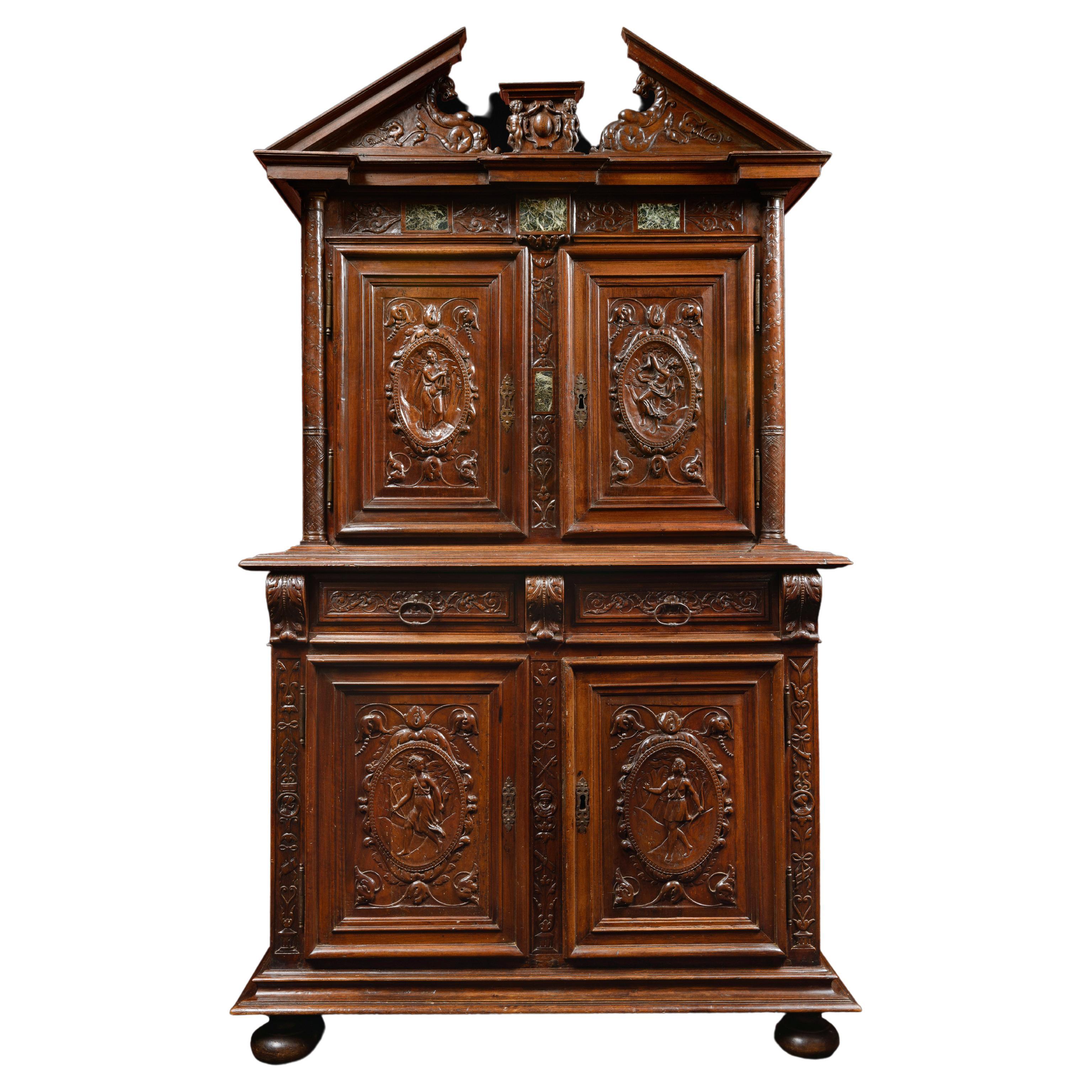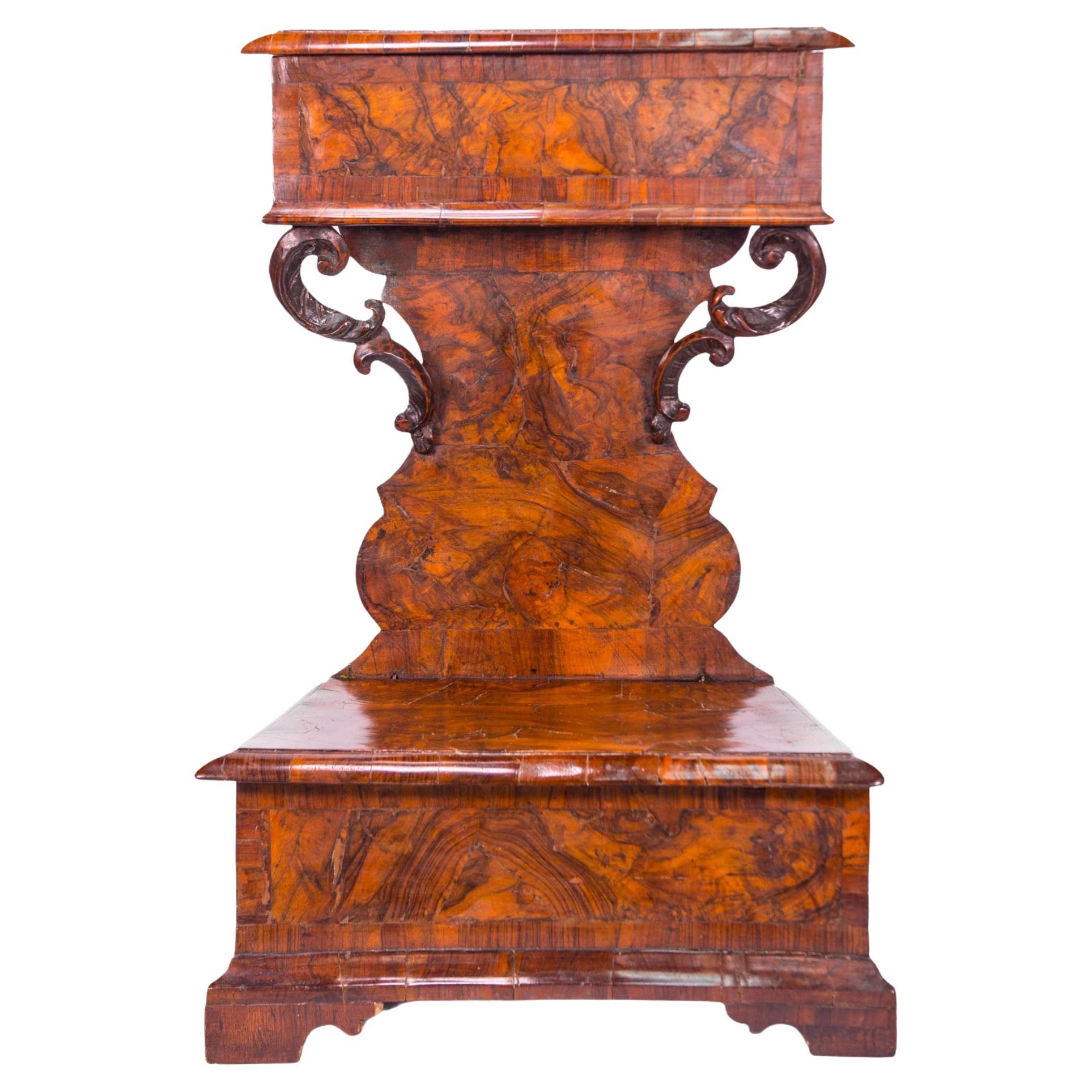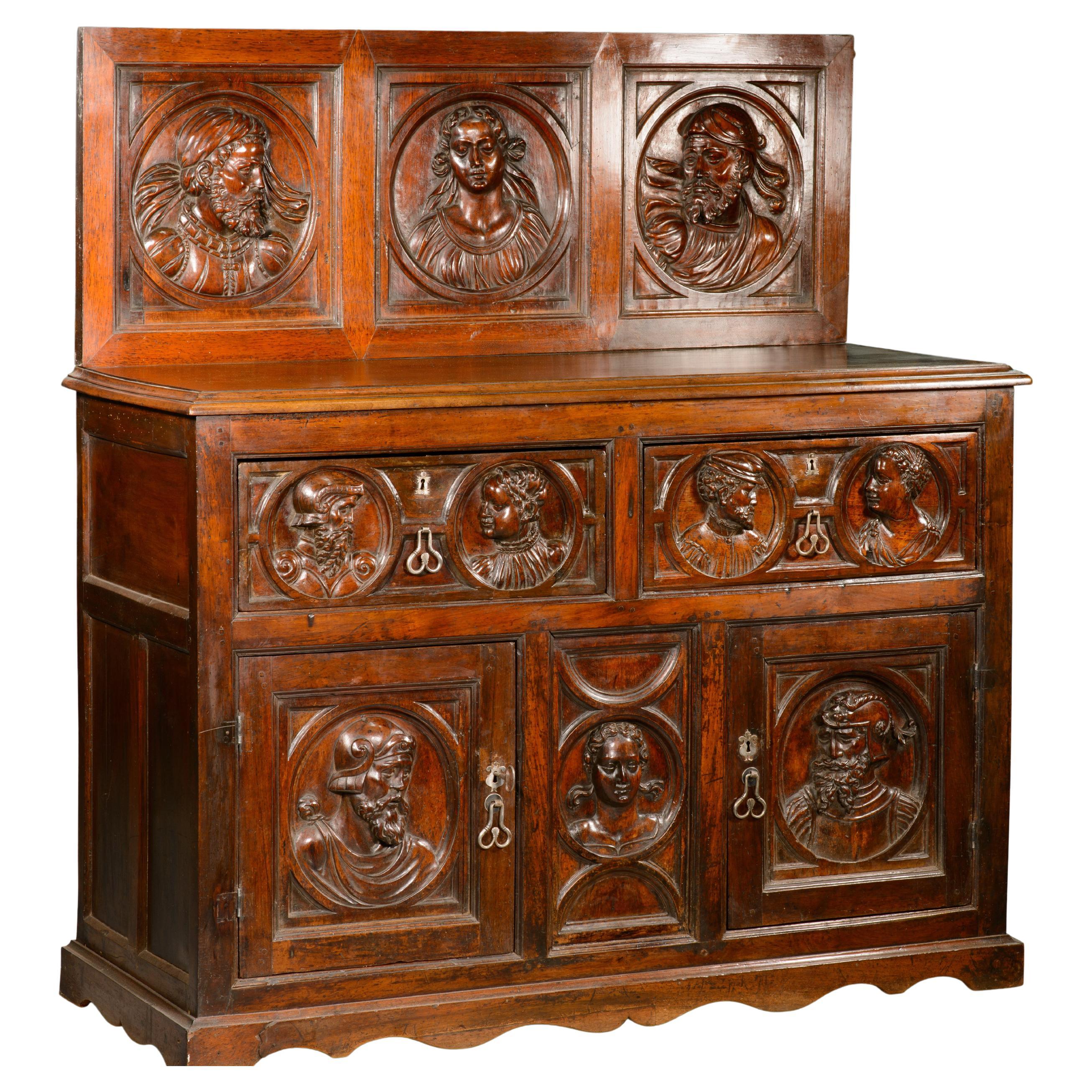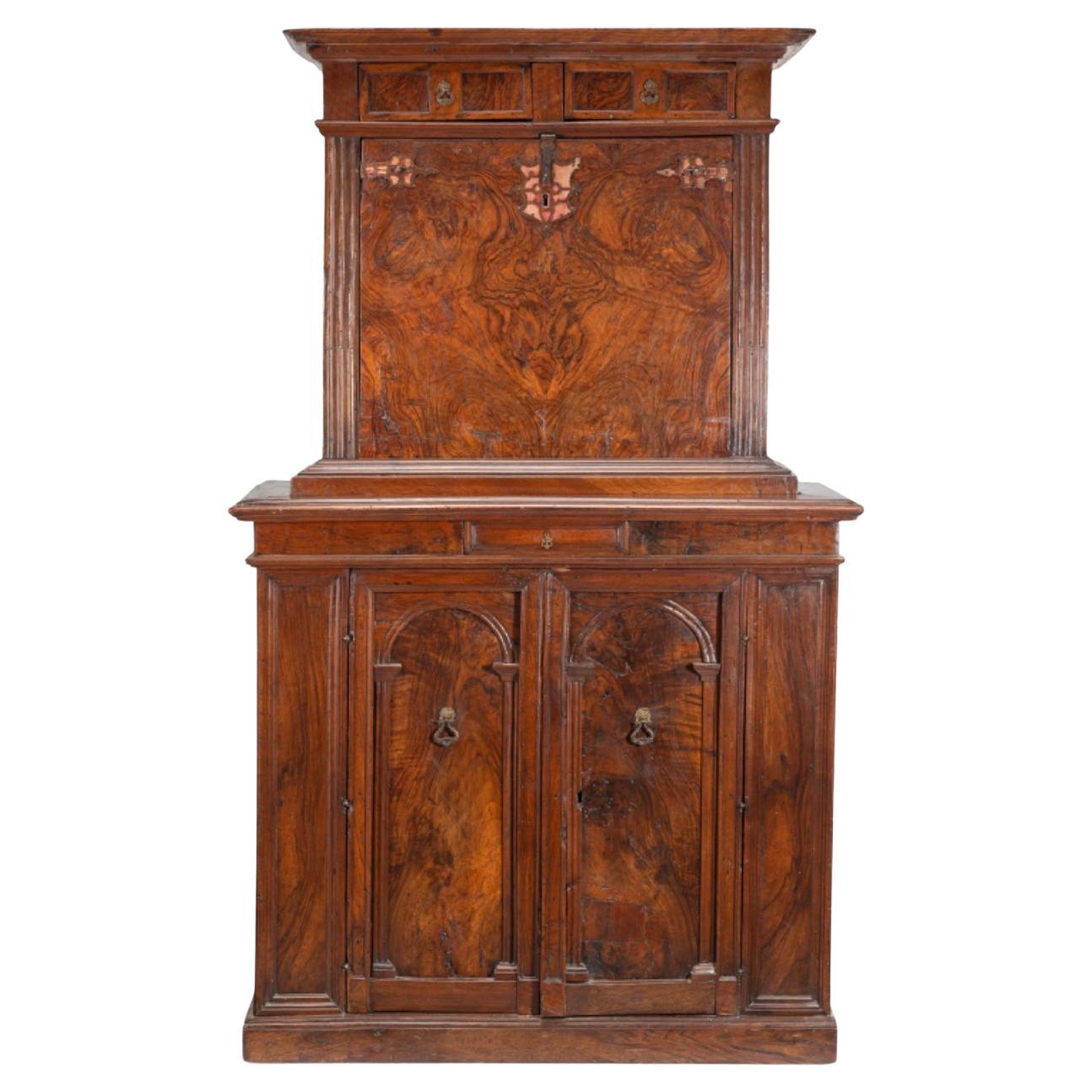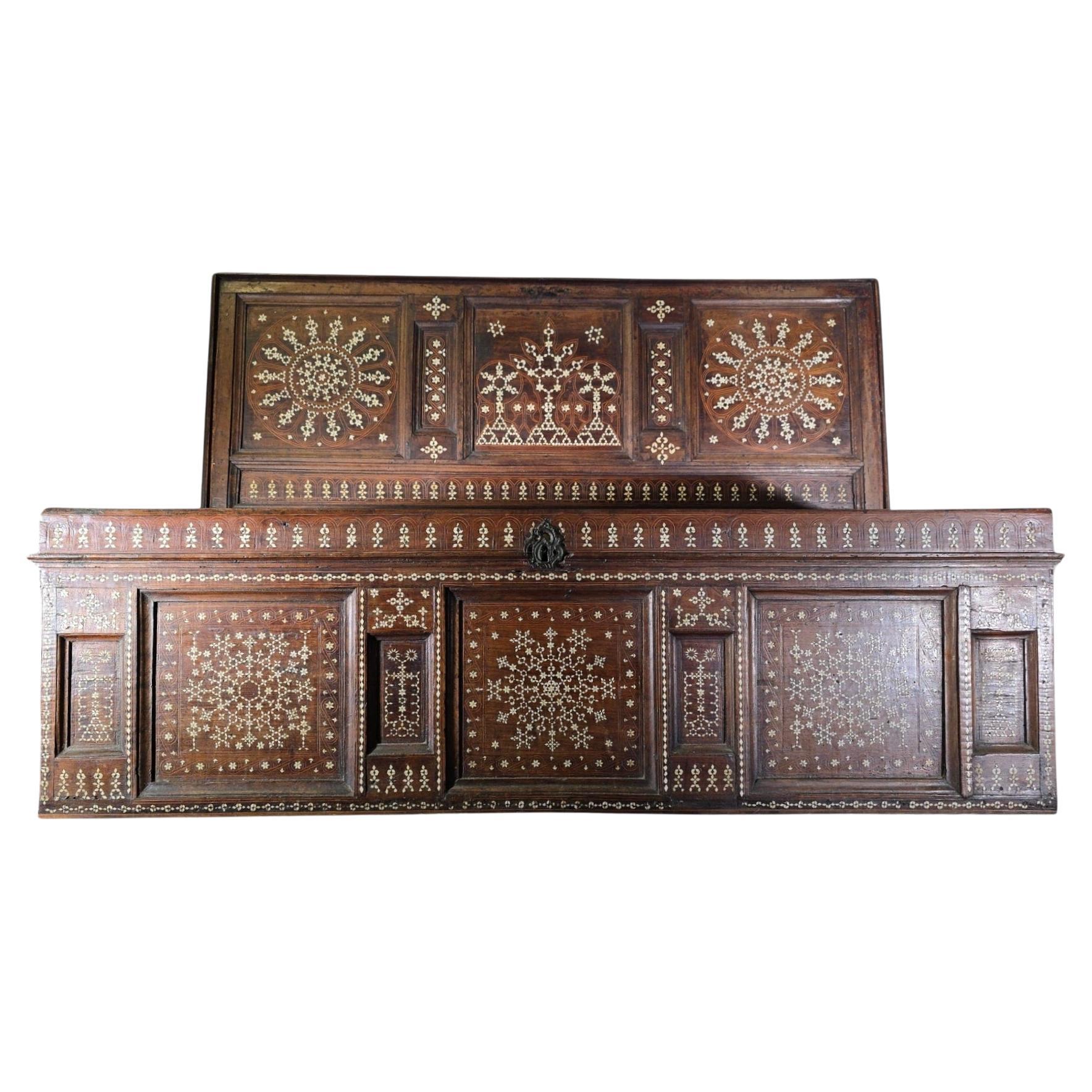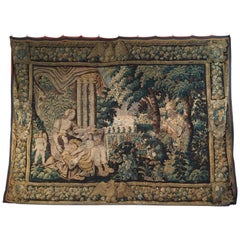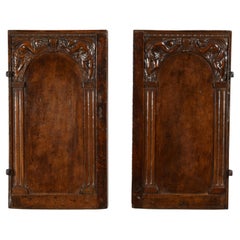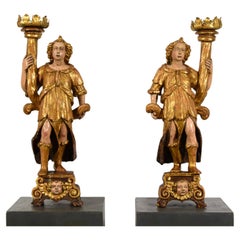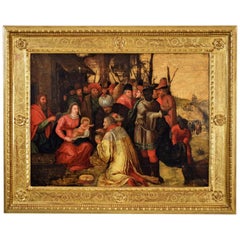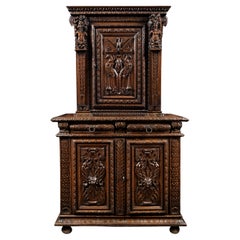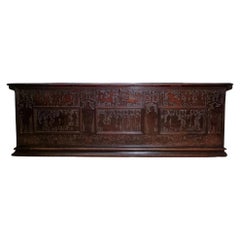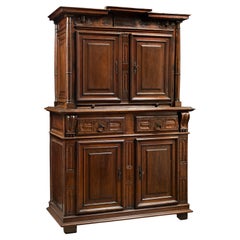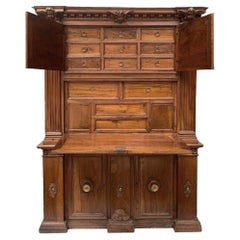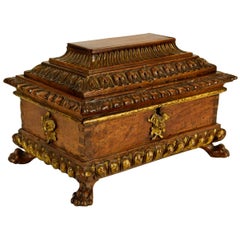
16th Century Tuscany Carved and Gilded Wood Box
View Similar Items
Want more images or videos?
Request additional images or videos from the seller
1 of 17
16th Century Tuscany Carved and Gilded Wood Box
$19,493.97List Price
About the Item
- Dimensions:Height: 11.03 in (28 cm)Width: 16.93 in (43 cm)Depth: 12.6 in (32 cm)
- Style:Renaissance (Of the Period)
- Materials and Techniques:
- Place of Origin:
- Period:
- Date of Manufacture:16th Century
- Condition:
- Seller Location:IT
- Reference Number:1stDibs: LU4405218004712
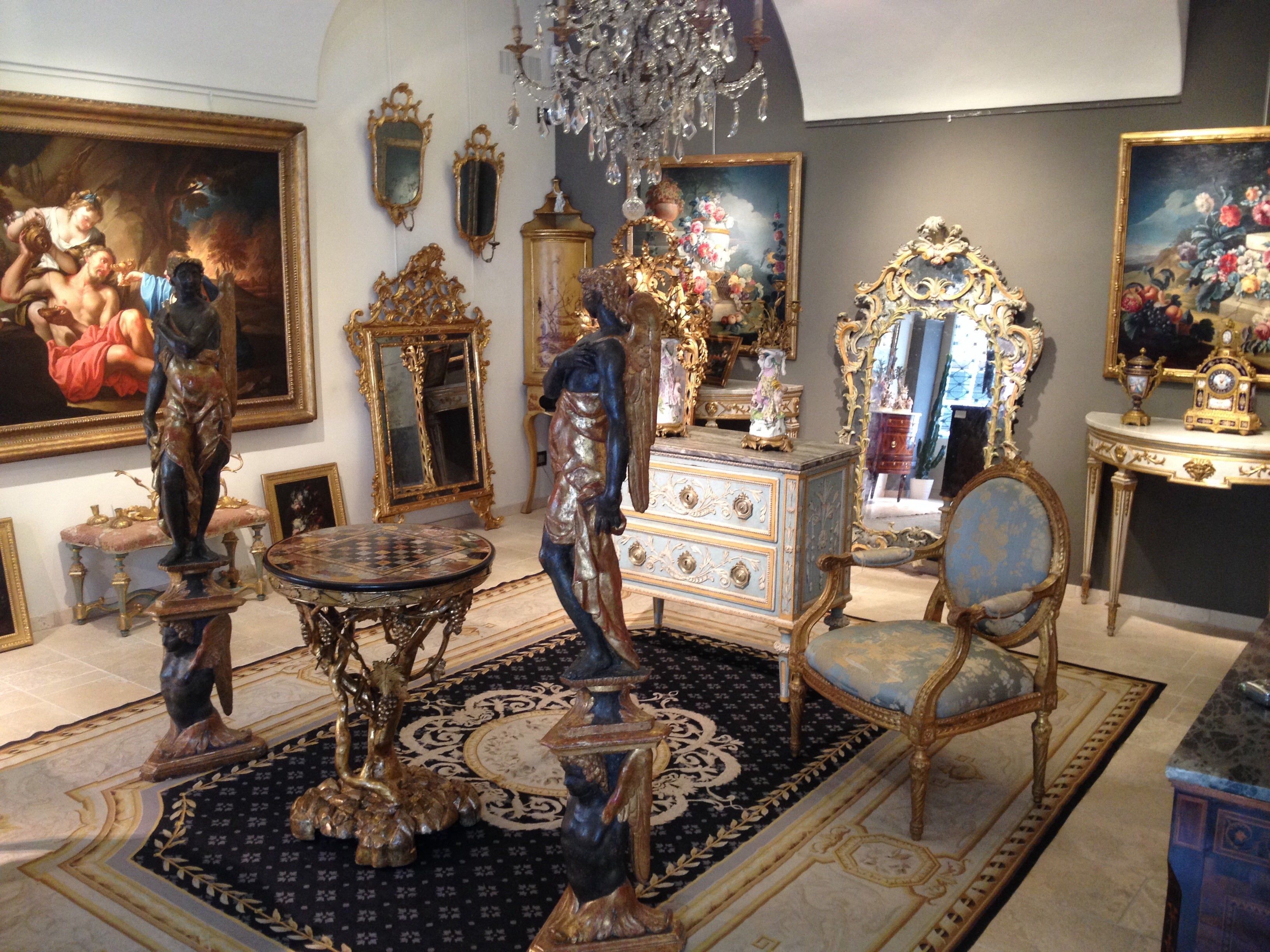
About the Seller
5.0
Platinum Seller
Premium sellers with a 4.7+ rating and 24-hour response times
Established in 1980
1stDibs seller since 2019
56 sales on 1stDibs
Typical response time: 1 hour
Authenticity Guarantee
In the unlikely event there’s an issue with an item’s authenticity, contact us within 1 year for a full refund. DetailsMoney-Back Guarantee
If your item is not as described, is damaged in transit, or does not arrive, contact us within 7 days for a full refund. Details24-Hour Cancellation
You have a 24-hour grace period in which to reconsider your purchase, with no questions asked.Vetted Professional Sellers
Our world-class sellers must adhere to strict standards for service and quality, maintaining the integrity of our listings.Price-Match Guarantee
If you find that a seller listed the same item for a lower price elsewhere, we’ll match it.Trusted Global Delivery
Our best-in-class carrier network provides specialized shipping options worldwide, including custom delivery.More From This Seller
View All16th Century, Flemish Storied Wood Tapestry
Located in IT
16th century, Flemish storied wood tapestry
Flanders Brussels
The beautiful and precious tapestry, of fine workmanship and made with wool yarns, was made in the 16th century in F...
Category
Antique 16th Century Belgian Renaissance Tapestries
Materials
Wool
16th Century, Pair of Italian Small Carved Walnut Doors
Located in IT
Pair of small carved walnut doors, 16th century, central Italy
This pair of small doors was made in the sixteenth century, in central Italy, in carved walnut. The decoration provides...
Category
Antique 16th Century Italian Renaissance Decorative Art
Materials
Walnut
16th Century, Pair of Italian Lacquered and Gilt Wood Sculptures Torch Holders
Located in IT
16th Century, Pair of Italian Lacquered and Gilt Wood Sculptures Torch Holders
The pair of sculptures, in finely carved wood, lacquered and gilded, was born as a torch holder, and ...
Category
Antique 16th Century Italian Renaissance Figurative Sculptures
Materials
Wood
Frans Franken III 16th Century Oil on Wood, Adoration of the Magi, Painting
By Frans Franken the Younger
Located in IT
Frans Franken III and aid, Adoration of the Magi
Good condition
The oil painting on wood, with a gold background, depicts an Adoration of the Magi. The Magi are dressed in sumptuous silk and brocade dresses; they wear precious hats and jewelery. The richness of their garments is in contrast with the humility of the Holy Family and of the other characters who, around curious, observe the scene. The hut is simple, made of wood and straw: above it shines the Comet, symbol of the divine event. In the distance, a group of wayfarers walk along a path that is lost on the horizon, blending into the gold of the bottom.
The representation proposes a traditional iconography, in which the painter inserts some details that he lends himself to symbolic interpretations. Among these is the appearance of the Magi, who from the XIVth century differs iconographically: the wise astronomers represent the homage to Jesus of the then known parts of the world, namely Africa, Asia and Europe. To the right of the Magi, in the foreground, sits a monkey, considered a demonic creature and a symbol of lies and sin. It is depicted on the sidelines, as a defeat, next to a fragment of a classical column: ruin alludes to the end of paganism, of the old world that collapses with the advent of the new one, marked by the birth of Christ and liberation from the Original Sin. On the ruins he climbs the ivy, symbol of the immortality of the soul. The work is attributable to the workshop of the Flemish painter Frans Francken III...
Category
Antique 16th Century Belgian Renaissance Paintings
Materials
Paint
Late 19th Century, Wood and Gilt Bronze French Showcase Vitrine
Located in IT
The splendid showcase vitrine, made of solid wood, dates back to the end of the 19th century. Made in France by a master cabinet maker of great ability, it’s in Louis XVI style.
The ...
Category
Antique Late 19th Century French Louis XVI Vitrines
Materials
Bronze
$42,089 Sale Price
25% Off
18th century, Italian Solid Walnut Wood Trumeau
Located in IT
18th century, Italian solid walnut wood Trumeau
Measures: height cm 239, width cm 122, depth cm 52, depth raised cm 30
Elegant Trumeau, made in piedmont, north of Italy, in th...
Category
Antique Mid-18th Century Italian Louis XV Cabinets
Materials
Bronze
You May Also Like
16th Century French Carved Renaissance Cabinet
Located in Saint-Ouen, FR
Rare carved Renaissance cabinet
Period : 2nd half 16th century, ca. 1570
Origin : France, Burgundy or Languedoc
This cabinet embody the produ...
Category
Antique 16th Century French Renaissance Cabinets
Materials
Walnut
16th Century Venetian Renaissance Cedar Wood Cassone
Located in Hoddesdon, GB
A large 16th century Venetian cedar. wood Cassone is an exquisite example of the craftsmanship characteristic of the Italian Renaissance period, featuring beautifully detailed scenes dating to circa 1550-1580.
Made from cedar wood, the chest has a deep, rich patina. Cedar wood was prized during the Renaissance for its durability and resistance to decay, making it an ideal choice for fine furniture intended to last for generations.
In Renaissance Venice, cassoni were a standard part of a bride's dowry among the nobility and wealthy merchant classes. Venice was a thriving trade hub with a population of about 150,000 in the mid-16th century, and the upper classes commissioned these chests .
The decoration of the chest is particularly breathtaking. Its surface features intricate figural panels that depict various scenes, which include historical, mythological, and symbolic representations. Among these are 16th century knights, chariots, mythical beasts, and lions. The designs are expertly silhouetted against a recessed ground, giving a three-dimensional quality that enhances their visual impact.
The use of punch-work, a decorative technique involving the stamping of the wood with a mesh-like pattern, adds texture and depth to the surfaces. This technique is indicative of the meticulous attention to detail for which artisans in Italy were known during this period.
Overall, this Venetian Cassone...
Category
Antique 16th Century Italian Renaissance Cabinets
Materials
Iron
16th Century Renaissance Two-Bodied Cabinet
Located in Saint-Ouen, FR
Former collection Altounian
At the beginning of the reign of Henri II (1547-1559) the furniture’s ornamentation evolves. The few medieval motifs that were still used are eventually relinquished. Furniture becomes more sober showcasing moulded panels and perfect architecture. Cabinet-makers use ornaments such as curved fluted or plain columns, feather quills, roses or winged putti heads. High-relief carving becomes more scarce and compositions lighter. To that end cabinet-makers draw inspiration from Fontainebleau motifs filtering them and adapting them to French taste.
During this period cabinet-makers turn into a kind of architects. Indeed the architectural balance of furniture is the centre of their concerns. The study of Antic formulas is then a necessity. From this care given to proportions appear refined cabinets with pure lines.
This style is characteristic of the reign of Henri II and disappears soon after under the regency of Catherine de Medici (1560-1574) when an abundance of high and low-relief ornaments comes back on furnitures.
This two-bodies cabinet...
Category
Antique 16th Century French Renaissance Cabinets
Materials
Walnut
Magnificent 16th Century Italian Walnut Stipo
Located in Rio De Janeiro, BR
This magnificent Italian Renaissance stipo cabinet offers both an impressive aesthetic and functional versatility, reflecting its historical grandeur. Crafted in rich walnut, this st...
Category
Antique 16th Century Italian Renaissance Cabinets
Materials
Walnut
Antique 16th century Spanish carved cabinet in oak
Located in Meulebeke, BE
Spain / 16th century / cabinet / oak / Rustic / Antique
A stunning Spanish antique highboard or cabinet in warm oak wood with two doors from the 16th century. The cabinet has its original keys and offers ample storage space behind the doors.
This hand carved antique oak cabinet...
Category
Antique 16th Century Spanish Rustic Cabinets
Materials
Oak
16th Century Period Renaissance Tuscan Walnut Credenzino
Located in Vero Beach, FL
16th Century Period Renaissance Tuscan Walnut Credenzino
Italian 16th/17th century Renaissance walnut small Credenza with a rectangular top above a single drawer centered over a s...
Category
Antique 16th Century Italian Renaissance Credenzas
Materials
Walnut
Recently Viewed
View AllMore Ways To Browse
Wood Band Trunk
Coin Chest
Florentine Jewelry Box
Italian Wedding Chest
Antique Carved Wedding Bands
Small Wood Carved Jewelry Chest
Florentine Gilded Box
Antique Glass Door Cabinet
White Shelf
Antique Ebony Furniture
Cabinet With Mirror Doors
France Display Cabinet
French Display Cabinet
French Display Cabinets
19th Century Front Door
Antique Key Cabinet
19th Carved Cabinet Century Door
Display Case With Drawers
